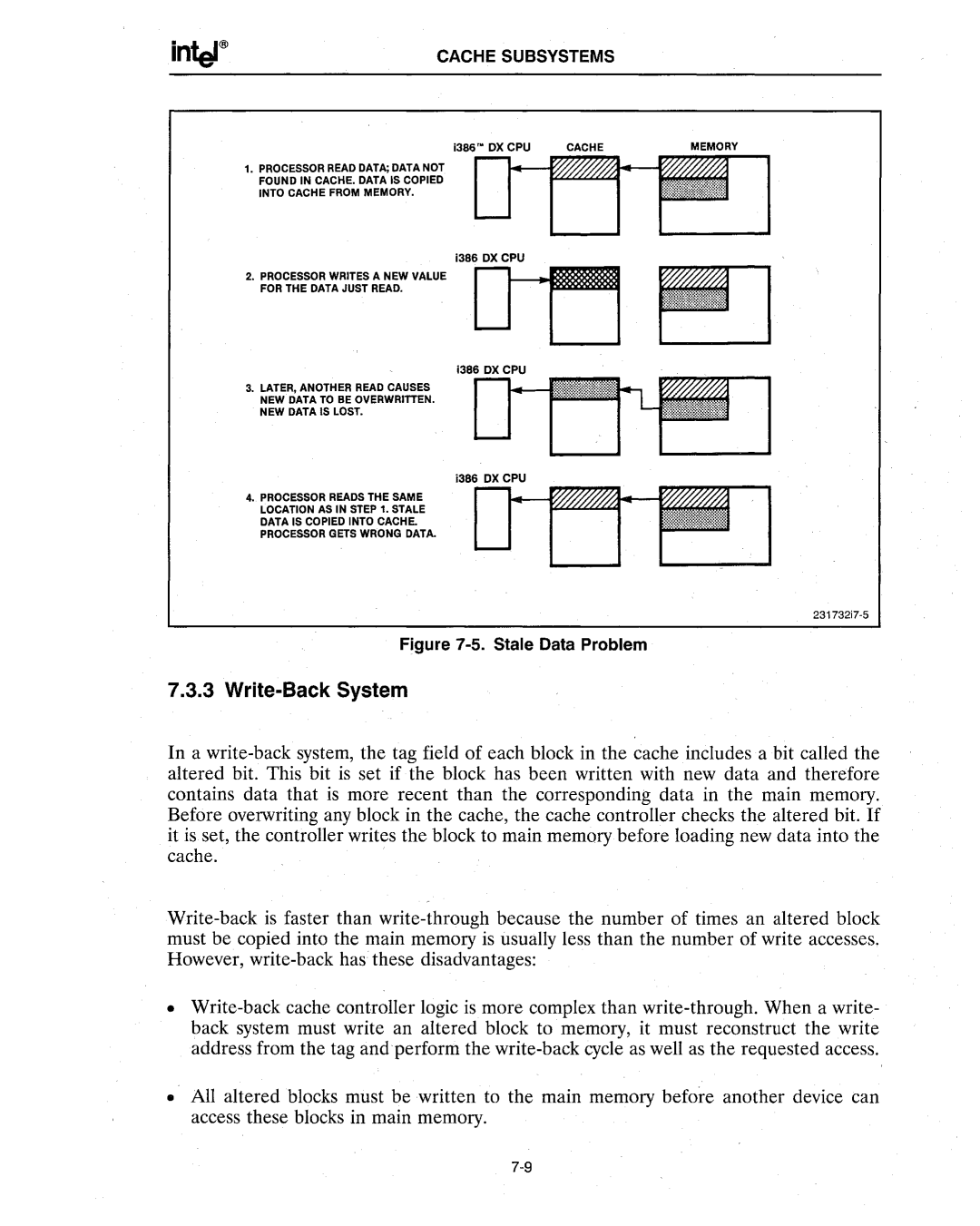CACHE SUBSYSTEMS
1.PROCESSOR READ DATA; DATA NOT FOUND IN CACHE. DATA IS COPIED INTO CACHE FROM MEMORY.
;3B6oOX CPU -u
2. PROCESSOR WRITES A NEW VALUE FOR THE DATA JUST READ.
3.LATER, ANOTHER READ CAUSES NEW DATA TO BE OVERWRITTEN. NEW DATA IS LOST.
4.PROCESSOR READS THE SAME LOCATION AS IN STEP 1. STALE DATA IS COPIED INTO CACHE.
PROCESSOR GETS WRONG DATA.
231732;7·5
Figure 7-5.Stale Data Problem
7.3.3 Write-Back System
In a write-back system, the tag field of each block in the cache includes a bit called the altered bit. This bit is set if the block has been written with new data and therefore contains data that is more recent than the corresponding data in the main memory. Before overwriting any block in the cache, the cache controller checks the altered bit. If it is set, the controller writes the block to main memory before loading new data into the cache.
Write-back is faster than write-through because the number of times an altered block must be copied into the main memory is usually less than the number of write accesses. However, write-back has these disadvantages:
•Write-back cache controller logic is more complex than write-through. When a write- back system must write an altered block to memory, it must reconstruct the write address from the tag and perform the write-back cycle as well as the requested access.
•All altered blocks must be written to the main memory before another device can access these blocks in main memory.
7-9

